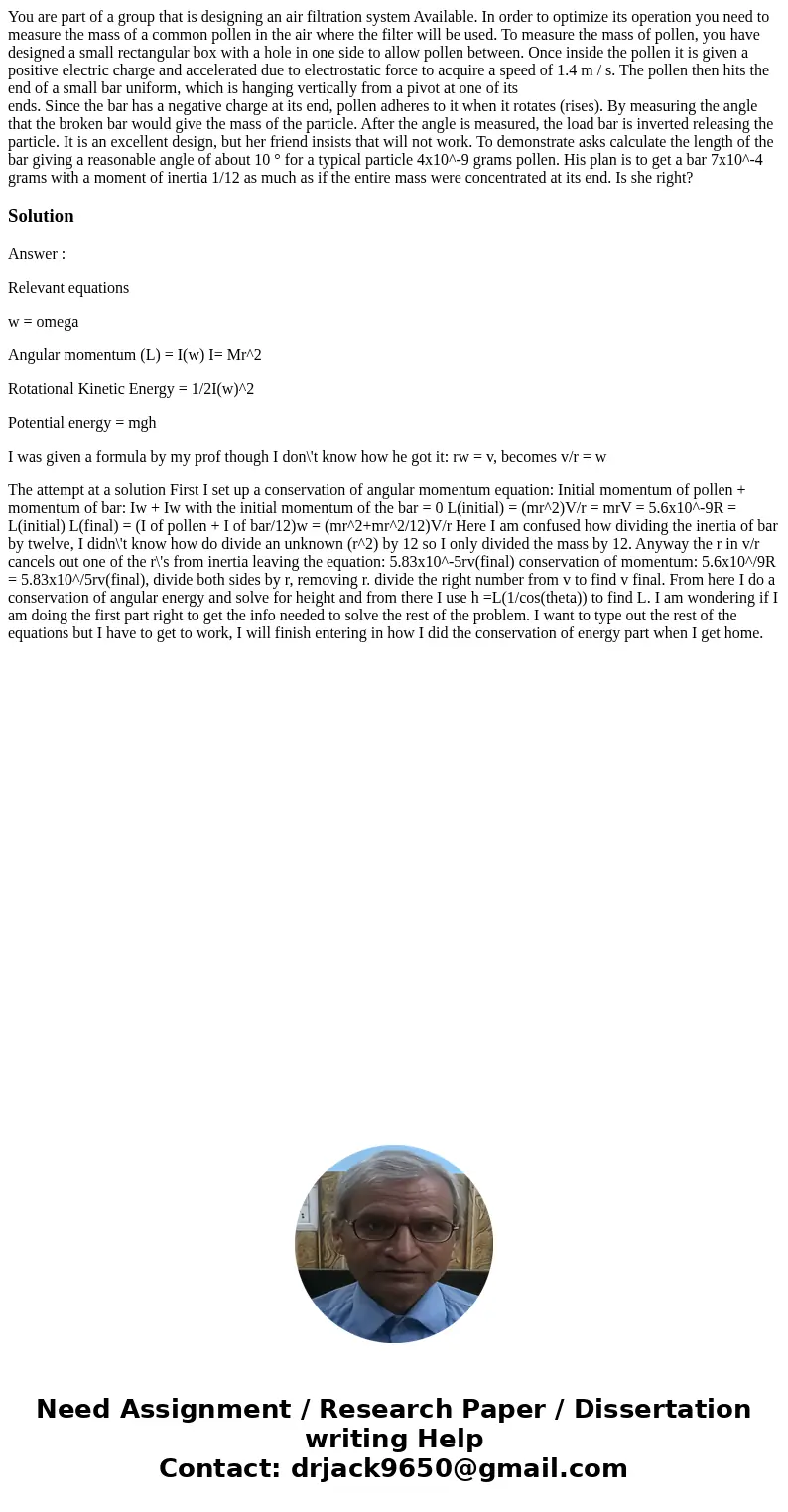You are part of a group that is designing an air filtration
You are part of a group that is designing an air filtration system Available. In order to optimize its operation you need to measure the mass of a common pollen in the air where the filter will be used. To measure the mass of pollen, you have designed a small rectangular box with a hole in one side to allow pollen between. Once inside the pollen it is given a positive electric charge and accelerated due to electrostatic force to acquire a speed of 1.4 m / s. The pollen then hits the end of a small bar uniform, which is hanging vertically from a pivot at one of its
ends. Since the bar has a negative charge at its end, pollen adheres to it when it rotates (rises). By measuring the angle that the broken bar would give the mass of the particle. After the angle is measured, the load bar is inverted releasing the particle. It is an excellent design, but her friend insists that will not work. To demonstrate asks calculate the length of the bar giving a reasonable angle of about 10 ° for a typical particle 4x10^-9 grams pollen. His plan is to get a bar 7x10^-4 grams with a moment of inertia 1/12 as much as if the entire mass were concentrated at its end. Is she right?
Solution
Answer :
Relevant equations
w = omega
Angular momentum (L) = I(w) I= Mr^2
Rotational Kinetic Energy = 1/2I(w)^2
Potential energy = mgh
I was given a formula by my prof though I don\'t know how he got it: rw = v, becomes v/r = w
The attempt at a solution First I set up a conservation of angular momentum equation: Initial momentum of pollen + momentum of bar: Iw + Iw with the initial momentum of the bar = 0 L(initial) = (mr^2)V/r = mrV = 5.6x10^-9R = L(initial) L(final) = (I of pollen + I of bar/12)w = (mr^2+mr^2/12)V/r Here I am confused how dividing the inertia of bar by twelve, I didn\'t know how do divide an unknown (r^2) by 12 so I only divided the mass by 12. Anyway the r in v/r cancels out one of the r\'s from inertia leaving the equation: 5.83x10^-5rv(final) conservation of momentum: 5.6x10^/9R = 5.83x10^/5rv(final), divide both sides by r, removing r. divide the right number from v to find v final. From here I do a conservation of angular energy and solve for height and from there I use h =L(1/cos(theta)) to find L. I am wondering if I am doing the first part right to get the info needed to solve the rest of the problem. I want to type out the rest of the equations but I have to get to work, I will finish entering in how I did the conservation of energy part when I get home.

 Homework Sourse
Homework Sourse